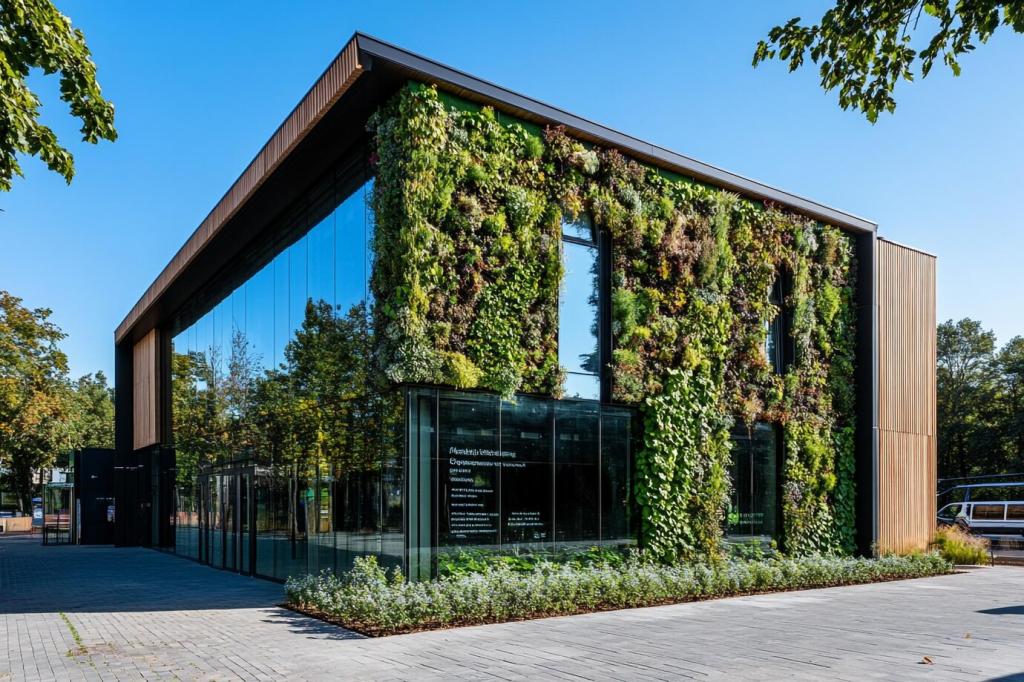
Real-World Case Studies of Eco-Friendly Home Renovations
Chosen theme: Case Studies of Eco-Friendly Home Renovations. Dive into practical, human stories that prove sustainability can be beautiful, budget-savvy, and deeply personal. Explore detailed transformations, measured results, and lessons you can apply. Enjoy, comment with your questions, and subscribe for our next case study drop.
Planning with Purpose: Audit First, Design Second
The owners started with a professional energy audit, blower-door testing, and infrared imaging to pinpoint leaks. From there, they set targets for airtightness, insulation R-values, and window performance, aligning wish lists with budgets. Smart phasing allowed improvements without displacing the family for months.
Materials That Matter: Insulation, Air-Sealing, Windows
Dense-pack cellulose filled wall cavities; attic insulation reached R-60; and meticulous air-sealing cut infiltration dramatically. Triple-pane windows with warm-edge spacers preserved historic proportions via custom sashes. Reclaimed heart pine trim kept character intact while minimizing new material use and avoiding landfill waste.
Results and ROI: Comfort You Can Measure
After completion, energy use fell by 55% year-over-year, confirmed by utility bills and post-retrofit testing. Winter rooms felt evenly warm, with surface temperatures rising and drafts vanishing. The projected payback was 7.5 years, but comfort dividends were immediate, convincing neighbors to schedule their own audits.
Rain Harvesting that Actually Delivers
A 5,000-gallon cistern system, fed by metal roofing and first-flush diverters, provided reliable irrigation nine months of the year. Gutter screens reduced maintenance, while smart sensors paused pumping after heavy rainfall. The homeowners appreciated the visible gauge that kept daily conservation goals tangible and motivating.
Greywater Done Right: From Laundry to Landscape
A laundry-to-landscape system redirected wash water to fruit trees through subsurface emitters, minimizing exposure and evaporation. Approved detergents without salts protected soil health. Local permitting was straightforward with a clear plan, and an annual inspection routine ensured everything stayed safe, efficient, and compliant.
Xeriscape Beauty: Less Thirst, More Wildlife
Turf gave way to native bunchgrasses, manzanita, and flowering yarrow that welcomed pollinators. Deep mulch capped evaporation and kept weeds manageable, while drip irrigation targeted roots precisely. Within a season, the yard looked lush yet required a fraction of the water, time, and weekend maintenance.

Low-Waste Urban Apartment Remodel

Deconstruction as Design Philosophy
Instead of smashing out cabinetry, the team cataloged, unscrewed, and donated components to a local reuse center. Doors, hardware, and light fixtures found second lives. Salvage slowed the schedule by days, but landfill trips nearly vanished, and tax credits offset the modest labor premium with measurable savings.

Reclaimed and Remade
Countertops were crafted from recycled paper composite, while shelving used reclaimed Douglas fir from a demolished school gym. Tile offcuts arranged in a playful pattern turned “waste” into feature. The lived-in textures gave the space character that new materials lacked, sparking frequent compliments from guests.

Designed for Future Disassembly
Modular cabinets and clip-in wall panels allow easy replacement or repair without demolition dust. Mechanical fasteners replaced adhesives wherever feasible. When the tenants move, they can reconfigure or take pieces along, extending product lifespans and preserving the apartment for the next creative steward to personalize responsibly.

Orientation and Glazing: Let the Sun Work
South-facing windows expanded to capture low winter sun, while east and west glazing shrank to reduce summer overheating. Deep overhangs prevented midday glare in July. Interior concrete floors became effective thermal mass, smoothing temperature swings and storing daytime warmth for evenings by the woodstove.

Insulation and Airtightness Above All
Walls upgraded to R-30 with continuous exterior insulation; the roof to R-60; and a careful air barrier brought the blower-door score below 1.5 ACH50. Taped sheathing, gasketed outlets, and thoughtful penetrations kept the envelope tidy, making even windy nights feel calm and whisper-quiet inside.
Healthy Home Renovation: Toxins Out, Fresh Air In
Paints, adhesives, and sealants all met GreenGuard or EC1 certifications, and composite woods were formaldehyde-free. The team requested full ingredient disclosures, catching one hidden solvent before ordering. The result was fewer odors, easier breathing, and a sense of control that made renovation stress far more manageable.


System Integration without Rewiring the World
A load calculation confirmed the existing panel could handle a variable-speed heat pump with modest upgrades. The installer set conservative outdoor lockout temperatures initially, then optimized curves after the first cold front. A compact heat-pump water heater fit a closet, adding dehumidification to the laundry niche.

Solar, Storage, and Load Shifting
A 6.2 kW array paired with a small battery covered most daytime loads while time-of-use rates encouraged overnight charging. The thermostat preheated slightly before peak hours, coasting through expensive periods. Data showed 72% annual self-consumption and noticeably flatter utility bills, even in shoulder seasons with variable weather.

Lessons Learned the Friendly Way
Comfort improved immediately, but the biggest win was predictability. Maintenance reminders in the app prevented neglect, and neighbors were reassured by quiet outdoor units. The owners recommend interviewing installers thoroughly, verifying refrigerant commissioning, and requesting a simple dashboard to make energy savings visible and motivating.
